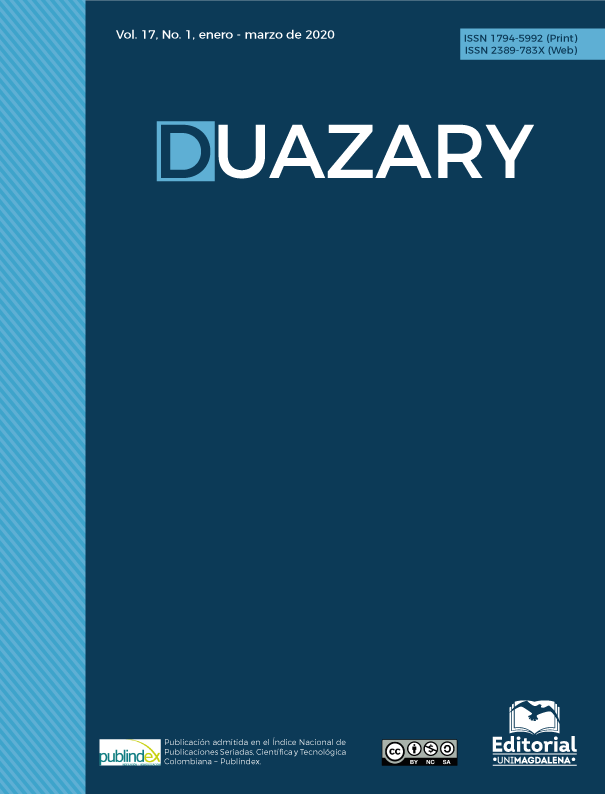Comparación de fuerzas de corte del escalpelo y profundidad en tejidos gingivales porcinos
Contenido principal del artículo
Resumen
La composición de las encías le confiere algunas características físicas que la hacen resistentes al estímulo mecánico. El objetivo del estudio fue comparar la diferencia de fuerzas utilizadas al realizar cortes en las secciones anterior y posterior del tejido gingival porcino, midiendo la profundidad del tejido. Se realizó un estudio descriptivo comparativo con un muestreo de conveniencia no probabilístico, se utilizaron mandíbulas de cerdo seccionadas. Los ensayos experimentales se realizaron en un analizador de textura EZ-S SHIMADZU. Todas las muestras se sometieron a una fuerza de corte vertical, por lo que se identificó el nivel de fuerza utilizado para realizar la incisión y su profundidad. Se evaluó la fuerza necesaria para realizar un corte en el tejido gingival porcino, comparando la sección posterior con la anterior, al igual que la profundidad de dicho corte, mostrando una diferencia estadística en la profundidad (p = 0,022 p <0,59). Con respecto a la fuerza, no se encontraron diferencias estadísticamente significativas. En las muestras analizadas donde se comparó la fuerza de corte en la sección posterior y anterior, no se encontraron diferencias en ambos grupos; en cuanto a la profundidad de corte, esta fue mayor en la sección posterior que en la anterior.
Descargas
Detalles del artículo
No se permite un uso comercial de la obra original ni de las posibles obras derivadas, la distribución de las cuales se debe hacer con una licencia igual a la que regula la obra original.
Citas
2. Moreno L, Calderas F. La sangre humana desde el punto de vista de la reología. Mat Avanz. 2013; (20): 33-37. https://www.researchgate.net/publication/258848400_La_sangre_humana_desde_el_punto_de_vista_de_la_reologia
3. Chen H, Zhao X, Lu X, Kassab G. Non-linear micromechanics of soft tissues. Int J Non Linear Mech. 2013;(56):79-85. https://doi.org/10.1016/j.ijnonlinmec.2013.03.002
4. Chanthasopeephan T, Desai JP, Lau AC. Study of soft tissue cutting forces and cutting speeds. Stud Health Technol Inform. 2004; (98):56-62. https://doi.org/10.3233/978-1-60750-942-4-56
5. Carter TJ, Sermesant M, Cash DM, Barratt DC, Tanner C, Hawkes DJ. Application of soft tissue modelling to imageguided surgery. Med Eng Phys. 2005; 27 (10): 893-909. http://dx.doi.org/10.1016/j.medengphy.2005.10.005
6.Díaz A, Tarón A, Hernández R, Camacho A, Fortich N. Deformation of scalpel blades after incision of gingival tissue in pig mandibles. An ex vivo study. 2017; 21(3): 173-179. https://doi.org/10.1016/j.rodmex.2017.09.013
7. Carda C, Peydró A. Aspectos estructurales del periodonto de inserción: estudio del tejido óseo. Labor Dental Clínica. 2008;9(6):283-291. Available in:https://dialnet.unirioja.es/ejemplar /355371.
8. Kondo M, Yamato M, Takagi R, Murakami D, Namiki H, Okano T. Significantly different proliferative potential of oral mucosal epithelial cells between six animal species. J Biomed Mater Res A. 2014;102(6):1829-37. https.//doi.org/10.1002/jbm.a.34849
9. Gundiah N, Ratcliffe MB, Pruitt LA. Determination of strain energy function for arterial elastin: experiments using histology and mechanical tests. J Biomech. 2007; 40(3):586-594. https://doi.org/10.1016/j.jbiomech.2006.02.004
10. Chanthasopeephan T, Desai JP, Lau AC, editors. Measuring forces in liver cutting for reality-based haptic display. Intelligent Robots and Systems, 2003. (IROS 2003). International Conference on. 2003; 3(4):3083 – 3088. https://doi.org/10.1109/IROS.2003.1249630
11. Tholey G, Chanthasopeephan T, Hu T, Desai JP, Lau A. Measuring grasping and cutting forces for reality-based haptic modeling. International Congress Series. 2003. (1256):794–800. https://doi.org/10.1016/S0531-5131(03)00492-8
12. Chanthasopeephan T, Desai JP, Lau AC. Modeling soft-tissue deformation prior to cutting for surgical simulation: finite element analysis and study of cutting parameters. IEEE Trans Biomed Eng. 2007;54(3):349-359. https://doi.org/ 10.1109/TBME.2006.886937
13. Mahvash M, Hayward V. Haptic rendering of cutting: A fracture mechanics approach. Haptics-e. 2001;2(3):1-12. Avaliable in: http://hdl.handle.net/1773/34885
14. Ramachandra SS, Mehta DS, Sandesh N, Baliga V, Amarnath. J. Periodontal probing systems: a review of available equipment. Compend Contin Educ Dent. 2011;32(2):71-7. Avalaible in: https://www.ncbi.nlm.nih.gov/pubmed/21473303
15. Caton J, Greenstein G, Polson A. Depth of Periodontal Probe Penetration Related to Clinical and Histologic Signs of Gingival Inflammation. J Periodontol. 1981;52(10):626-9.
https://doi.org/10.1902/jop.1981.52.10.626
16. Al Shayeb K, Turner W, Gillam D. Accuracy and reproducibility of probe forces during simulated periodontal pocket depth measurements. Saudi Dent J. 2014;26(2):50-5. https://doi.org/10.1016/j.sdentj.2014.02.001
17. Botero M, Quintero AC. Evaluación de los biotipos periodontales en la dentición. CES odontol. 2001;14(2):13-18. Available in: http://revistas.ces.edu.co/index.php/odontologia/ article/view/689/412
18. Kan J, Morimoto T, Rungcharassaeng K, Roe P, Smith DH. Gingival biotype assessment in the esthetic zone: visual versus direct measurement. Int J Periodontics Restorative Dent. 2010; 30(3):237-43. Available in: http://jidai.ir/aticle-1-1890-en.html
19. Sa G, Xiong X, Wu T, Yang J, He S, Zhao Y. Histological features of oral epithelium in seven animal species: As a reference for selecting animal models. Eur J Pharm Sci. 2016 Jan 1;81:10-7.https://doi.org/10.1016/j.ejps.2015.09.019
20. S Cotin, Delingette H, Ayache, N. A HybridElastic Model allowing Real Time Cutting,
Deformations and Force-Feedback for Surgery Training and Simulation. Virtual Computer journal. 2000; 16 (8):437-452. Available in: https://hal.inria.fr/inria-00615105/document
21. Y Daigo, Masanori Y, Homa O, Yasunori Y, Kanji T. “A comparison between electrocautery and scalpel plus scissor in breast conserving surgery,” Oncol. Rep. 2003; 10:1729–1732. https://doi.org/10.3892/or.10.6.1729
22. H Cassandra, Jensen M. Histological methods for ex vivo axon tracing: A systematic review. Neurological Research. 2016; 38(7): 561-569. https://doi.org/10.1080/01616412.2016.1153820

